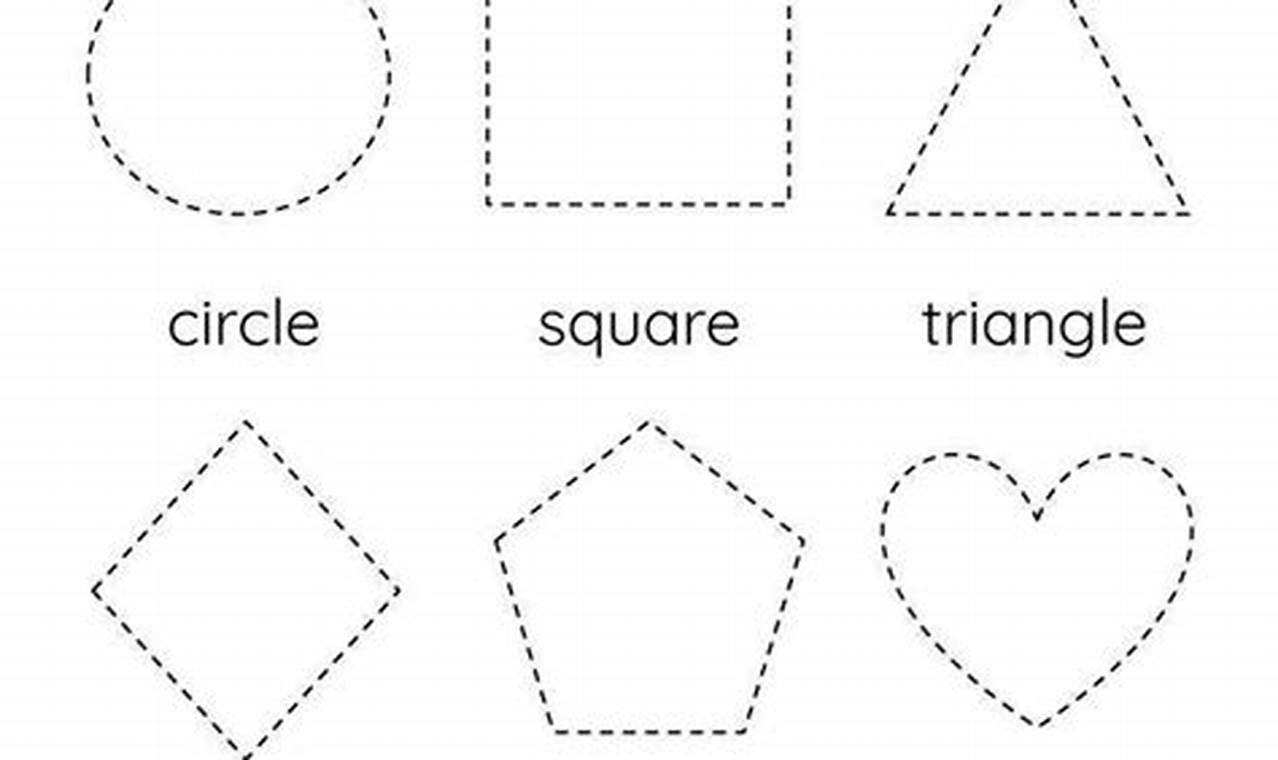Introducing fundamental concepts like shapes and data representation is crucial for early childhood education. Engaging with shape recognition and graphical analysis builds a strong foundation for future mathematical and analytical thinking. The “Tracing Shapes and Making a Graph” worksheet provides a fun, interactive method to achieve this, encouraging both shape identification and basic data handling skills. This combination fosters a well-rounded introduction to essential concepts.
The “Tracing Shapes and Making a Graph” worksheet offers several key learning benefits. Firstly, the tracing activity improves fine motor skills and hand-eye coordination. Secondly, it reinforces shape recognition by requiring children to visually identify and physically trace each shape. Finally, constructing a simple graph from the traced shapes introduces basic data collection and visual representation skills. This combination of skills is invaluable for developing early mathematical literacy.
This worksheet presents a variety of common shapes, such as circles, squares, triangles, and rectangles, in a clear and engaging format. Each shape is presented with dotted lines, allowing children to practice tracing. Below the shapes is space for children to count the number of times each shape was traced and then transfer that count to a simple bar graph. Clear labels accompany the graph to assist in understanding data representation. The worksheet uses bold lines and age-appropriate illustrations to maintain children’s interest and focus.
To effectively utilize the “Tracing Shapes and Making a Graph” worksheet, begin by encouraging the child to identify each shape before tracing. Provide guidance as needed. When tracing, encourage a slow and steady hand, focusing on staying within the dotted lines. After tracing all the shapes, assist the child in counting how many of each shape were traced. Finally, guide them in filling in the corresponding bars on the graph to represent the shape counts. Using a thick pencil or crayon can make the tracing easier for younger children. Break the task into smaller sessions if the child’s attention span is limited.
To further reinforce shape recognition and graphing skills, consider incorporating additional resources. Kidtraces.com offers a variety of related worksheets focusing on shape identification, counting, and graphing. Educational games involving shape sorting and simple data collection can also be beneficial. Reading books with colorful illustrations of shapes and stories involving counting and data representation can complement the worksheet and enhance learning. Daily activities, such as identifying shapes in the environment and making simple tally charts of observed objects, can reinforce the concepts in a practical context.
In summary, the “Tracing Shapes and Making a Graph” worksheet is a valuable tool for introducing fundamental concepts in a fun and engaging way. It combines the development of fine motor skills with early mathematical literacy by fostering shape recognition and basic data handling abilities. Parents and educators are encouraged to download and utilize this worksheet to support continuous learning and skill development. Explore Kidtraces.com for more free worksheets and resources that complement and expand upon these essential skills.
